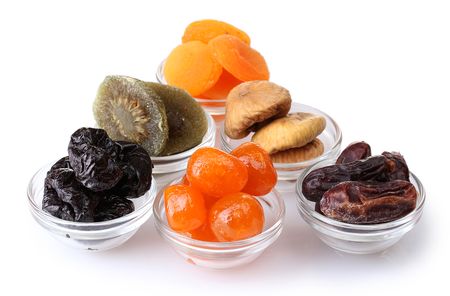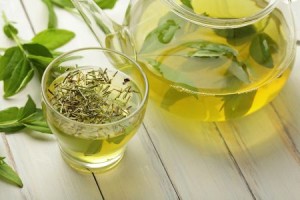

Allergic reactions are severe adverse reactions that occur when the body’s immune system overreacts to a particular allergen. These reactions may be caused by food, insect stings, medications, and some foods.
Although sulfites are not considered to cause a true allergic reaction, sulfite sensitive people may experience similar reactions as those with food allergies.
Sulfites are substances that used as food additives and preservatives to maintain food color and prolong shelf-life, prevent the growth of micro-organisms, and maintain the potency of certain medications.

Sulfites are used keep potatoes white and lettuce green, and are also used in the production of some food packaging materials (e.g. cellophane).
Sulfites are considered generally safe to eat for the majority of consumers. However, asthmatics, and people who are prone to allergies or deficient in the enzyme sulfite oxidase, tend to have more problems with sulfites. Sulfite Oxidase converts sulfites to sulfates, which are not harmful.
Sulfites can trigger asthma and symptoms of anaphylaxis, which is a life-threatening allergic-type reaction where breathing and heart activity are impaired.
Even when no sensitivity to food containing sulfites has been reported, there have been reported reactions to inhaled sulfites which caused an allergic reaction,. You should know that sulfites and sulfite derivatives can often be also present in food under different names, e.g., potassium bisulphite. For other common ingredient label names, refer to the list below.
You should always read the ingredient list carefully to be sure.
Allergic reactions to sulfites usually show up within an hour of eating food containing sulfite. If you have signs of coughing, headaches, fatigue, itching or reddening of the skin within one hour after eating food containing sulfites, you should consider getting tested for sulfite sensitivity.
Sulfites are also known to destroy vitamin B1 (thiamin), a vitamin essential for metabolism of carbohydrates and alcohol.
Certain medications contain sulfites, yet are considered safe and may be used by sulfite-sensitive people as directed by an allergist. Avoid food and products that do not have an ingredient list, and read labels every time you shop. Manufacturers may occasionally change their recipes or use different ingredients for varieties of the same brand or even various sizes of the same product.
Refer to the following list before shopping:
Names for sulfites
- E 220, E 221, E 222, E 223, E 224, E 225, E 226, E 227, E 228 (European names)
- Potassium bisulphite/meta-bisulfite
- Sodium bisulphite/dithionite/meta-bisulfite/sulfite
- Sulfur dioxide
- Sulfite agents
- Sulfurous acid
Note: Sulfur, sulfite, and sulfurous are sometimes spelled sulphur, sulphite, and sulphurous, respectively.
Other possible sources of sulfites:
- Alcoholic/non-alcoholic beer, cider, wine (especially red wine)
- Baked goods, e.g., breads, cookies, pastries, waffles
- Bottled lemon and lime juice/concentrate
- Canned/frozen fruits and vegetables, e.g., mushrooms, sliced apples, olives, peas, peppers, pickles, pickled onions, tomatoes
- Cereal, cornmeal, cornstarch, crackers, muesli
- Condiments, e.g., coleslaw, horseradish, ketchup, mustard, pickles, relish, sauerkraut
- Deli meats, hot dogs, sausages
- Dressings, gravies, guacamole, sauces, soups, soup mixes
- Dried fruits/vegetables, e.g., apples, apricots, coconut, mincemeat, papaya, peaches, pears, pineapple, raisins, sun dried tomatoes
- Dried herbs, spices, tea
- Fish, including crustaceans and shellfish, e.g., shrimp (fresh/frozen)
- Fresh grapes, lettuce
- Fruit filling, fruit syrup, gelatin, jams, jellies, marmalade, molasses, pectin
- Fruit/vegetable juices, e.g., coconut, grape, sparkling grape, white grape
- Glazed/glacéed fruits, e.g., apples, grapes, maraschino cherries
- Potatoes, e.g., frozen french fries, dehydrated, mashed, peeled, pre-cut
- Snack foods, e.g., candy, chocolate/fruit bars, tortilla/potato chips, soft drinks, trail mix
- Soy products
- Starches, e.g., corn, potato, sugar beet; noodles, rice mixes
- Sugar syrups, e.g., glucose, glucose solids, syrup dextrose
- Tomato paste/pulp/puree
- Vinegar, wine vinegar
Note: This list is not complete and may change. Food and food products purchased from various countries, through mail-order or the internet, are not always produced using the same manufacturing and labeling standards.
Beyond basic food sensitivity
There is some evidence to suggest that sulfite sensitivities are not necessarily an allergic reaction, but the result of a metabolic imbalance resulting from the lack of molybdenum.
Sulfite sensitivity may be caused by a relative deficiency of the enzyme sulfite oxidase, which breaks down sulfites and requires molybdenum as a cofactor. Additional studies concerning this issue are currently in progress.
Molybdenum is a trace mineral found in most plant and animal tissues. Most people are not deficient in this mineral if the food they eat comes from nutrient-rich soil.
The RDA for molybdenum is 75 mcg, and recommended use varies from 75-500 mcg. Some natural sources: meats, whole grains, buckwheat, barley, wheat germ, legumes, lima beans, canned beans, and dark green leafy vegetables, and black beans.
Tips to Avoid Sulfites
- Be informed
- Read food labels for possible sources of sulfites and avoid them.
- Have a dietitian and/or physician review your risk profile for possible molybdenum deficiency.
- Get test strips and test yourself.
- Avoid dried fruits.
- Don’t eat maraschino cherries.
- If you want a potato with your meal, have a baked potato instead of fries or hashbrowns or any dish involving peeling the potato first.
- See an allergist and educate yourself about food allergies.
- Contact your local allergy association for further information.
Click here for more breakthrough nutrition information.
Comments 6
Leave a Reply
You must be logged in to post a comment.




I’m allergic to sulfa in medications, and recently discovered that sulphites in wine cause a head cold like reaction – it passes off in a few minutes, but I don’t like the sensation, so I avoid wine now. And I read labels of everything I buy – I was amazed at how many common food products contain sulphites.
Hi, shorti508. You can dry your own fruit either in a dehydrator or by placing the fruit single-layer on parchment paper on a cooking sheet and backing it at 200 degrees Fahrenheit or 100 degrees Celsius for about 8 hours.
Hi, Katrina55. The following is an excerpt regarding the issue: “There is much confusion regarding allergy to sulfa-containing drugs, sulfite as a preservative agent in foods and medications, sulfate salts of medications and the chemical element sulfur. Many of my patients assume that if they are allergic to one of these agents, then they are allergic to all of them. This is not necessarily true.” I hope this clarifies the issue – if not, please do repost.
I very allergic to sulfur and sulfites It started little by little and it got very bad.
I am highly allergic to sulfur in drugs, I break out in hives, would these sulfites in foods, which I eat, and don’t have a reaction, still be causing effects?
This article is very helpful. Being diabetic, my body does not always digest foods as it should. I will ask my doctor for a sulfite blood test and have already adjusted my food list. DOES ANYONE HAVE INFORMATION ON DRYING OUR OWN FRUIT? Shorti